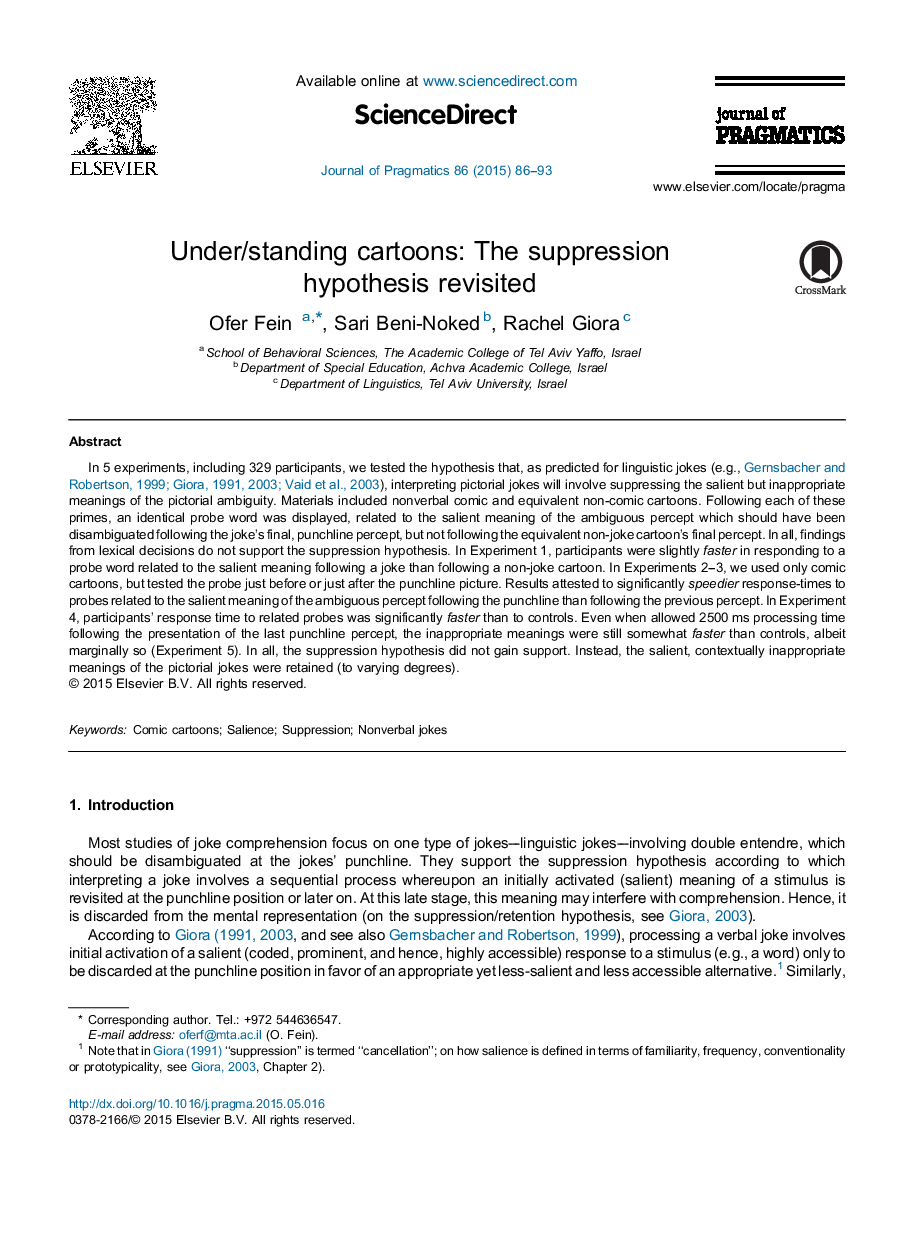| کد مقاله | کد نشریه | سال انتشار | مقاله انگلیسی | نسخه تمام متن |
|---|---|---|---|---|
| 932572 | 1474714 | 2015 | 8 صفحه PDF | دانلود رایگان |
• We test whether understanding pictorial jokes involves suppressing the salient incompatible meaning following the punchline position, as predicted for linguistic jokes.
• In 5 experiments we used comic cartoons followed by a lexical decision task, in which the salient meaning was presented.
• Results show that the salient meaning was retained, rather than suppressed.
• We suggest that processing cartoons might be different from processing linguistic jokes.
In 5 experiments, including 329 participants, we tested the hypothesis that, as predicted for linguistic jokes (e.g., Gernsbacher and Robertson, 1999, Giora, 1991, Giora, 2003 and Vaid et al., 2003), interpreting pictorial jokes will involve suppressing the salient but inappropriate meanings of the pictorial ambiguity. Materials included nonverbal comic and equivalent non-comic cartoons. Following each of these primes, an identical probe word was displayed, related to the salient meaning of the ambiguous percept which should have been disambiguated following the joke's final, punchline percept, but not following the equivalent non-joke cartoon's final percept. In all, findings from lexical decisions do not support the suppression hypothesis. In Experiment 1, participants were slightly faster in responding to a probe word related to the salient meaning following a joke than following a non-joke cartoon. In Experiments 2–3, we used only comic cartoons, but tested the probe just before or just after the punchline picture. Results attested to significantly speedier response-times to probes related to the salient meaning of the ambiguous percept following the punchline than following the previous percept. In Experiment 4, participants’ response time to related probes was significantly faster than to controls. Even when allowed 2500 ms processing time following the presentation of the last punchline percept, the inappropriate meanings were still somewhat faster than controls, albeit marginally so (Experiment 5). In all, the suppression hypothesis did not gain support. Instead, the salient, contextually inappropriate meanings of the pictorial jokes were retained (to varying degrees).
Journal: Journal of Pragmatics - Volume 86, September 2015, Pages 86–93
